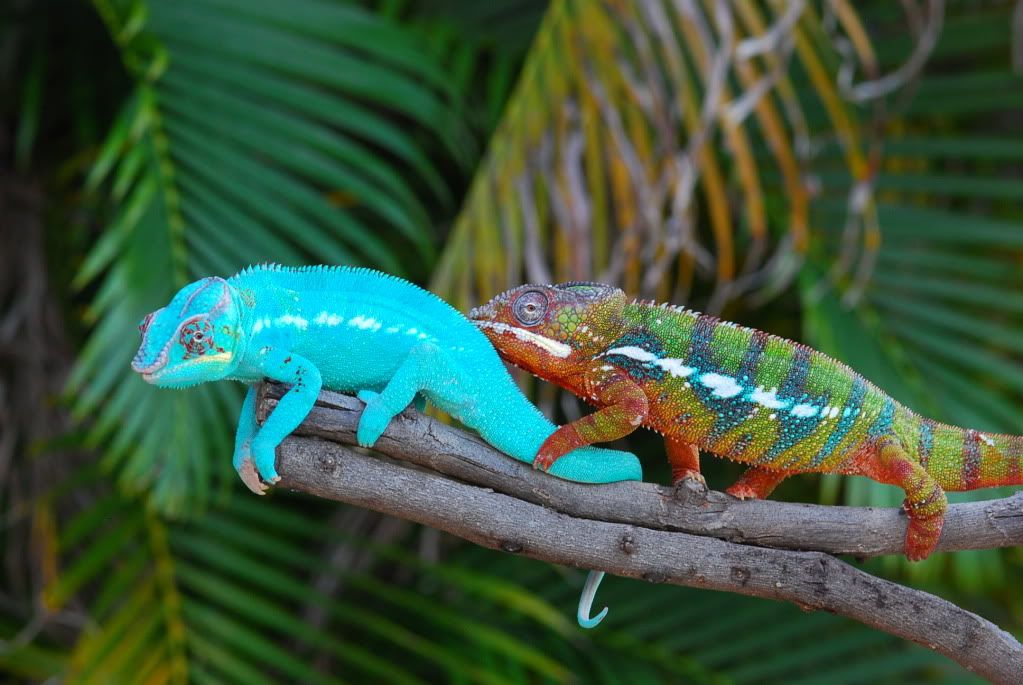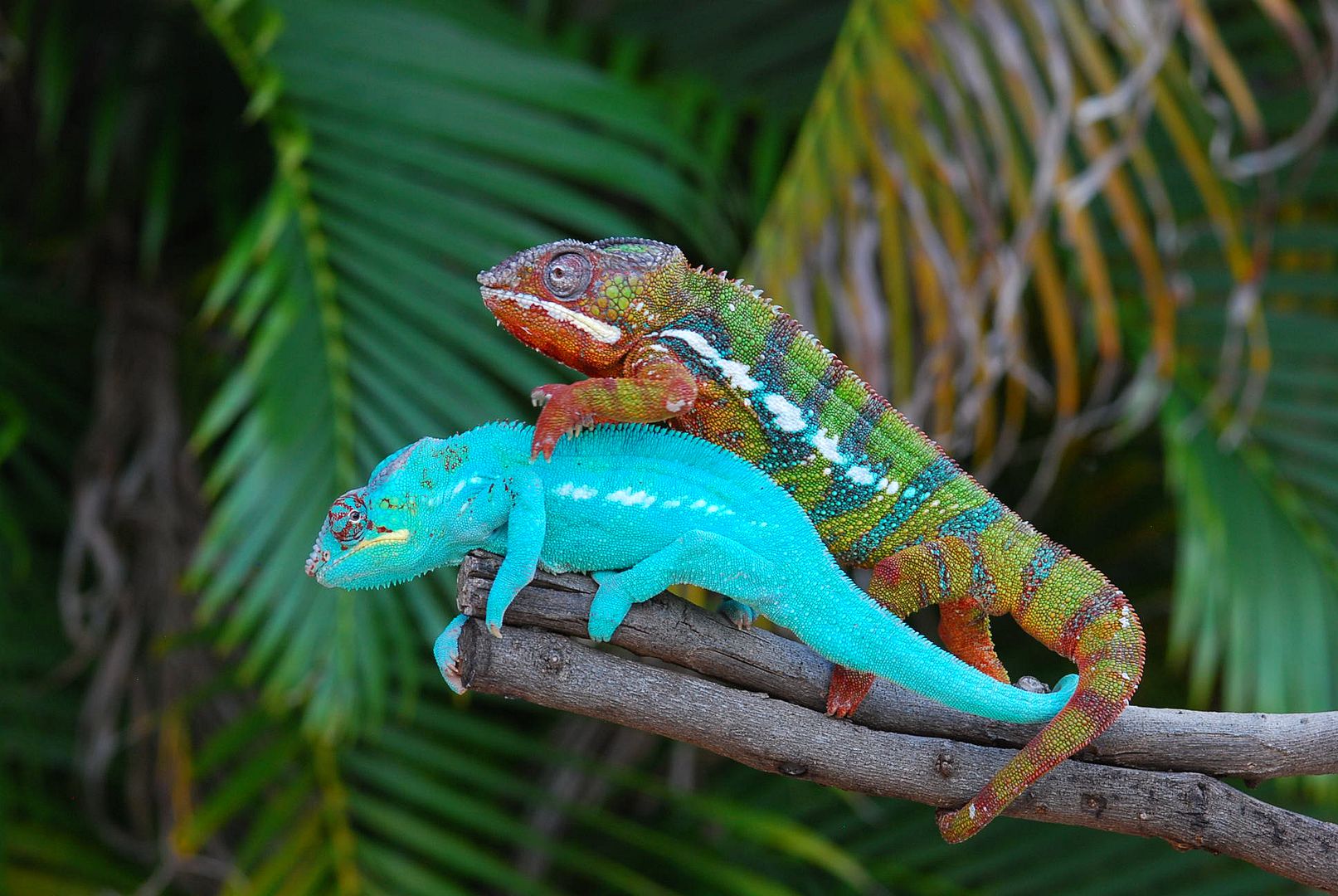Dez
Chamalot Chameleons
I have housed several females together (a group of veiled girls..and group of panther girls) in a large cage or a room with a free range.
I have not had problems in the larger cages or the freerange room. I have had problems when housing two females in a standard 2x2x4 cage . Even though they seemed to 'get along' in both cases one of the females got sick. The sickness (RI) cleared up once when was separated to her own enclosure. So I think stress being the main reason.
I would not house a male and female veiled together. A young female can be triggered to make eggs just seeing a male. If she is young and her body makes eggs too early then this could cause complications such as eggbinding.
Also a male will try to mate with a female even if she is not ready. He will be persistent and the female can fight back and cause injury. I have a male veiled now given to me by a friend that is missing most of his tail... my friend tried to breed them when the female was not ready and she bit his tail right off!
also as Jann said.. it is likley the female will not feel secure with the male around and not lay her eggs.. she needs a private secure spot
I have not had problems in the larger cages or the freerange room. I have had problems when housing two females in a standard 2x2x4 cage . Even though they seemed to 'get along' in both cases one of the females got sick. The sickness (RI) cleared up once when was separated to her own enclosure. So I think stress being the main reason.
I would not house a male and female veiled together. A young female can be triggered to make eggs just seeing a male. If she is young and her body makes eggs too early then this could cause complications such as eggbinding.
Also a male will try to mate with a female even if she is not ready. He will be persistent and the female can fight back and cause injury. I have a male veiled now given to me by a friend that is missing most of his tail... my friend tried to breed them when the female was not ready and she bit his tail right off!
also as Jann said.. it is likley the female will not feel secure with the male around and not lay her eggs.. she needs a private secure spot









